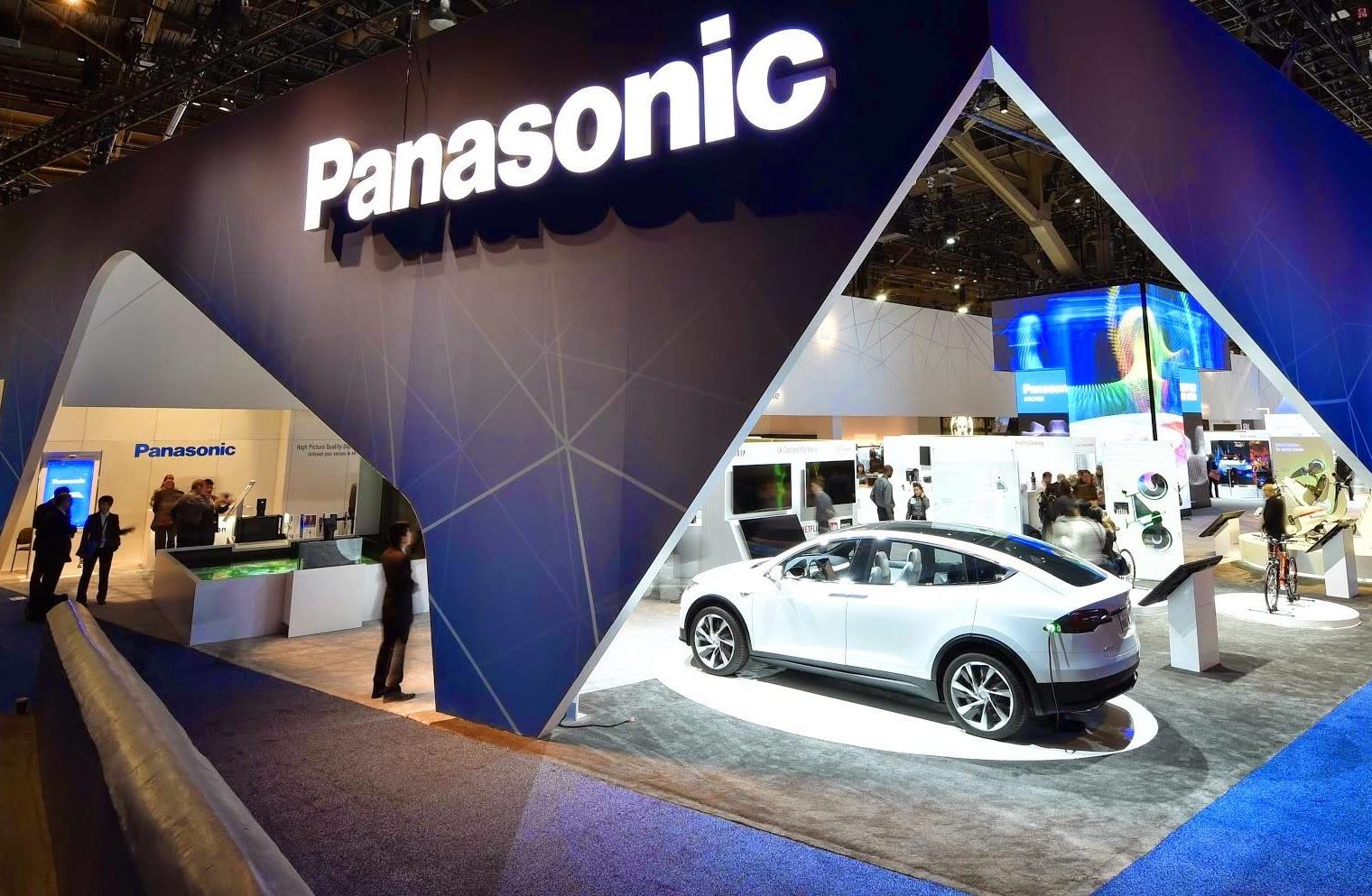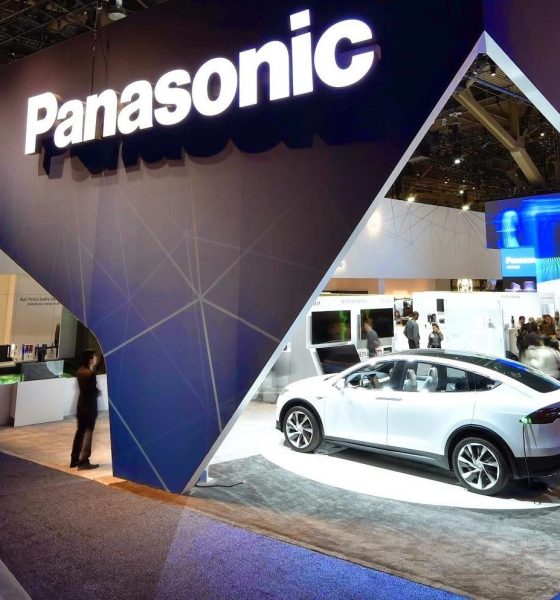Tesla’s battery partner and long-time supporter, Panasonic, just turned 100 years old. Entrepreneur’s Lydia Belanger reports that throughout the last century, “Panasonic has pivoted regularly, expanded globally and today continues to look toward the future of technology, including teaming up with Tesla.” Panasonic’s financial investments in Tesla aren’t the only support it provides — its rich history is full of lessons that Tesla can learn from in order to successfully grow.
Back in 1918, a young 23-year-old, Konosuke Matsushita, founded the company now known as Panasonic. His design for a new kind of light socket launched the new Japanese business. And early on, “Matsushita was ahead of his time as far as his management approach. When the company was 2 years old and had 28 employees, he formed what he called the ‘Hoichi Kai,’ which translates to ‘one-step society.’ It brought employees together to play sports and participate in other recreational activities.”
Matsushita also had a penchant for generosity and transparency. Belanger reports, “Matsushita’s philosophy was one of trust, and he decided to share trade secrets even with new employees to build trust at all levels of the organization. By the end of 1922, the company had 50 employees and a new factory.”
Matsushita also got the company through tough times with aplomb. Instead of firing workers when inventory piled up, Matsushita said, “We’ll halve production not by laying off workers, but [by] having them work only half days. We will continue to pay the same wages they are getting now, but there will be no holidays. All employees should do their best to sell inventory.” And the plan worked.
Above: The fascinating story of Panasonic’s iconic founder, Konosuke Matsushita (Youtube: Channel Panasonic – Official)
Matsushita was viewed as egalitarian. During the Great Depression, he said, “The mission of a manufacturer is to create material abundance by providing goods as plentiful and inexpensive as tap water.” And he planned far into the future as a “long-term visionary… [Matsushita] proposed a 250-year plan for the company, divided into 10 25-year periods that would be further divided into a 10-year construction phase, a 10-year active phase and a five-year fulfillment phase.”
In addition to light sockets, Panasonic offered an ever-growing, eclectic mix of products over the years. In 1934, “Panasonic produced its first electric motor… [then] from 1945 through 1959, Panasonic began producing agitator washing machines, monochrome TVs, refrigerators, radios, rice cookers, tape recorders and home air conditioners. The company also began expanding globally in the 1950s.”
Konosuke Matsushita passed away on April 27th, 1989, at the age of 94, but his legacy lives on. In the 1980s, “the company expanded its personal electronics offerings… Fast-forward to the digital era, which has pushed Panasonic to pivot further, including ceasing production of analog TVs back in 2006. In 2008, the company finally changed its name from Matsushita Electric Industrial Co., Ltd. to Panasonic Corporation — Panasonic had been one of its many brands.”
More recently, “Panasonic divided itself into four companies based on its four primary business divisions: appliances, eco solutions, AVC networks and automotive and industrial systems.” And in the past few years, “Panasonic announced it would invest more than a [billion] in Tesla Motors’ planned Gigafactory battery plant. It supplies the batteries for Tesla models S, X and 3.” And Panasonic is also a partner at Gigafactory 2 manufacturing Tesla’s solar products.
Panasonic has come a long way in the last 100 years, growing to become “a global leader with over 240,000 employees, with sales of more than $70 billion dollars a year.” Its future plans include a 10-year vision to embrace a wide variety of emerging technologies, from the Internet of Things (IoT) to robotics. And with its Gigafactory partner, Tesla, the company is poised for further breakthroughs in the automotive and energy sectors.
===
Note: Article originally published on evannex.com by Matt Pressman; Source: Entrepreneur

Investor's Corner
Tesla stock closes at all-time high on heels of Robotaxi progress

Tesla stock (NASDAQ: TSLA) closed at an all-time high on Tuesday, jumping over 3 percent during the day and finishing at $489.88.
The price beats the previous record close, which was $479.86.
Shares have had a crazy year, dipping more than 40 percent from the start of the year. The stock then started to recover once again around late April, when its price started to climb back up from the low $200 level.
This week, Tesla started to climb toward its highest levels ever, as it was revealed on Sunday that the company was testing driverless Robotaxis in Austin. The spike in value pushed the company’s valuation to $1.63 trillion.
Tesla Robotaxi goes driverless as Musk confirms Safety Monitor removal testing
It is the seventh-most valuable company on the market currently, trailing Nvidia, Apple, Alphabet (Google), Microsoft, Amazon, and Meta.
Shares closed up $14.57 today, up over 3 percent.
The stock has gone through a lot this year, as previously mentioned. Shares tumbled in Q1 due to CEO Elon Musk’s involvement with the Department of Government Efficiency (DOGE), which pulled his attention away from his companies and left a major overhang on their valuations.
However, things started to rebound halfway through the year, and as the government started to phase out the $7,500 tax credit, demand spiked as consumers tried to take advantage of it.
Q3 deliveries were the highest in company history, and Tesla responded to the loss of the tax credit with the launch of the Model 3 and Model Y Standard.
Additionally, analysts have announced high expectations this week for the company on Wall Street as Robotaxi continues to be the focus. With autonomy within Tesla’s sights, things are moving in the direction of Robotaxi being a major catalyst for growth on the Street in the coming year.
Elon Musk
Tesla needs to come through on this one Robotaxi metric, analyst says
“We think the key focus from here will be how fast Tesla can scale driverless operations (including if Tesla’s approach to software/hardware allows it to scale significantly faster than competitors, as the company has argued), and on profitability.”

Tesla needs to come through on this one Robotaxi metric, Mark Delaney of Goldman Sachs says.
Tesla is in the process of rolling out its Robotaxi platform to areas outside of Austin and the California Bay Area. It has plans to launch in five additional cities, including Houston, Dallas, Miami, Las Vegas, and Phoenix.
However, the company’s expansion is not what the focus needs to be, according to Delaney. It’s the speed of deployment.
The analyst said:
“We think the key focus from here will be how fast Tesla can scale driverless operations (including if Tesla’s approach to software/hardware allows it to scale significantly faster than competitors, as the company has argued), and on profitability.”
Profitability will come as the Robotaxi fleet expands. Making that money will be dependent on when Tesla can initiate rides in more areas, giving more customers access to the program.
There are some additional things that the company needs to make happen ahead of the major Robotaxi expansion, one of those things is launching driverless rides in Austin, the first city in which it launched the program.
This week, Tesla started testing driverless Robotaxi rides in Austin, as two different Model Y units were spotted with no occupants, a huge step in the company’s plans for the ride-sharing platform.
Tesla Robotaxi goes driverless as Musk confirms Safety Monitor removal testing
CEO Elon Musk has been hoping to remove Safety Monitors from Robotaxis in Austin for several months, first mentioning the plan to have them out by the end of 2025 in September. He confirmed on Sunday that Tesla had officially removed vehicle occupants and started testing truly unsupervised rides.
Although Safety Monitors in Austin have been sitting in the passenger’s seat, they have still had the ability to override things in case of an emergency. After all, the ultimate goal was safety and avoiding any accidents or injuries.
Goldman Sachs reiterated its ‘Neutral’ rating and its $400 price target. Delaney said, “Tesla is making progress with its autonomous technology,” and recent developments make it evident that this is true.
Investor's Corner
Tesla gets bold Robotaxi prediction from Wall Street firm
Last week, Andrew Percoco took over Tesla analysis for Morgan Stanley from Adam Jonas, who covered the stock for years. Percoco seems to be less optimistic and bullish on Tesla shares, while still being fair and balanced in his analysis.

Tesla (NASDAQ: TSLA) received a bold Robotaxi prediction from Morgan Stanley, which anticipates a dramatic increase in the size of the company’s autonomous ride-hailing suite in the coming years.
Last week, Andrew Percoco took over Tesla analysis for Morgan Stanley from Adam Jonas, who covered the stock for years. Percoco seems to be less optimistic and bullish on Tesla shares, while still being fair and balanced in his analysis.
Percoco dug into the Robotaxi fleet and its expansion in the coming years in his latest note, released on Tuesday. The firm expects Tesla to increase the Robotaxi fleet size to 1,000 vehicles in 2026. However, that’s small-scale compared to what they expect from Tesla in a decade.
Tesla expands Robotaxi app access once again, this time on a global scale
By 2035, Morgan Stanley believes there will be one million Robotaxis on the road across multiple cities, a major jump and a considerable fleet size. We assume this means the fleet of vehicles Tesla will operate internally, and not including passenger-owned vehicles that could be added through software updates.
He also listed three specific catalysts that investors should pay attention to, as these will represent the company being on track to achieve its Robotaxi dreams:
- Opening Robotaxi to the public without a Safety Monitor. Timing is unclear, but it appears that Tesla is getting closer by the day.
- Improvement in safety metrics without the Safety Monitor. Tesla’s ability to improve its safety metrics as it scales miles driven without the Safety Monitor is imperative as it looks to scale in new states and cities in 2026.
- Cybercab start of production, targeted for April 2026. Tesla’s Cybercab is a purpose-built vehicle (no steering wheel or pedals, only two seats) that is expected to be produced through its state-of-the-art unboxed manufacturing process, offering further cost reductions and thus accelerating adoption over time.
Robotaxi stands to be one of Tesla’s most significant revenue contributors, especially as the company plans to continue expanding its ride-hailing service across the world in the coming years.
Its current deployment strategy is controlled and conservative to avoid any drastic and potentially program-ruining incidents.
So far, the program, which is active in Austin and the California Bay Area, has been widely successful.










